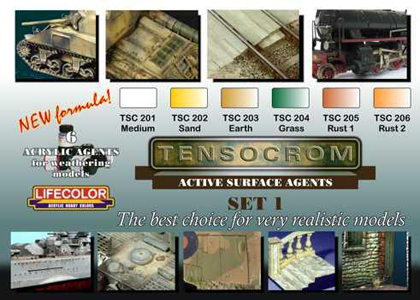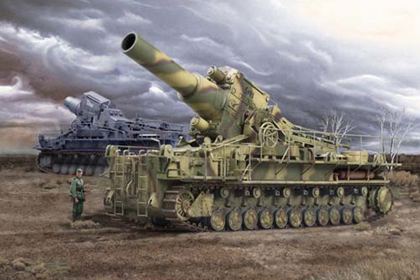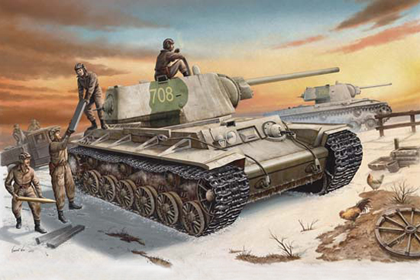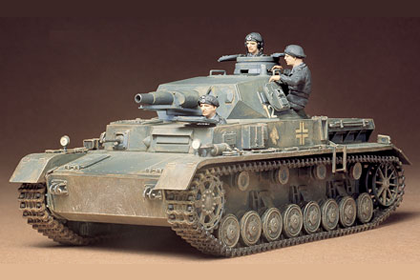![]()
This is the Eduard, photo etch set for the ‘German 20mm Flakvierling 38’ from Tamiya.
Detail set |
Tamiya |
||||
| (35 463) | Basic | 35 091 | |||
Source: Eduard
This is the Lifecolor TSC-01 effect set, with effect colors for ‘Tensocrom’.

This is the Trumpeter 00215 kit in 1/35 scale, of the ‘German Mörser Karl – Great 040/041’.

At a conference with Hitler in March 1943, it was stated that the first 54cm Gerat 041 would be delivered by June 1943, and the third, by mid-August. The 60cm and 54cm barrels appear to have been interchanged as required. In 1945, US forces captured vehicle II with a 60cm, and vehicle V with a 54cm. The prototype chassis, built in 1939, had eight road wheels with external swing arms. Production Karl had eleven road wheels.
Ammunition was transported in a tracked Munitionsschlepper converted from the Pz.Kpfw.IV, four rounds in each Schlepper. For the 60cm Gerat 040, the s Be Granate weighed 2.117 tons and the Ie Be Granate, 1.70 tons; in this case of the 54cm Gerat 041, 1.58 tons and 1.25 tons respectively. Maximum rate of the fire was 6 rph (rounds per hour). Guns I-IV went to the Russian Front in July 1941 with the 628th schwere Artillerie Abteilung. They saw action at various sites, including Lemburg in that year.
The best known action was against Sevastopol in 1942. Later, four guns were issued to the 833rd schwere Artillerie Abteilung (mot). These guns had the names Adam, Eve (1st Batt.) and Thor, Odin (2nd Batt.) The names for guns V and VI were Loki and Ziu.
This is the Trumpeter 01509 kit in 1/35 scale, of the ‘German Geschützwagen’.

The two halves of the train, before and behind the locomotive were identical and consisted of one artillery car with one 10cm le.F.H 14/19(p) gun, one command and infantry car and one artillery and anti-aircraft car with one 7.62cm F.K.295/l(r) and one 2cm anti-aircraft quadruple unit.
This is the Trumpeter 00359 kit in 1/35 scale, of the ‘Russian Heavy Tank, KV-1 model 1942’.

This is the Tamiya 35 096-1800 kit in 1/35 scale, of the ‘German Panzerkampfwagen IV, Ausf. D’.

This is the Trumpeter 00360 kit in 1/35 scale, of the ‘Russian Heavy Tank, KV-1 model 1942, Lightweight Cast Turret’.

The KV series utilize the same engine without major changes and the more and more added heavy weight drops the maximum speed from 35 Kilometers/hours to 28 kilometers/hour.
Off road performances are even worst and hard to operate. To solve the problem, a lightweight cast turret was born. One feature helps to identify turret of this type – A large cast ring around rear machine gun mount.